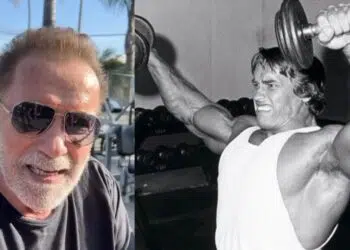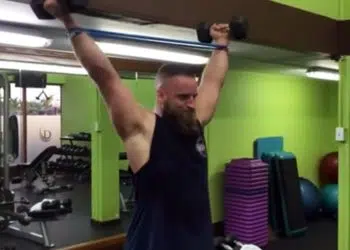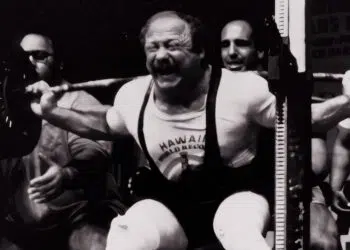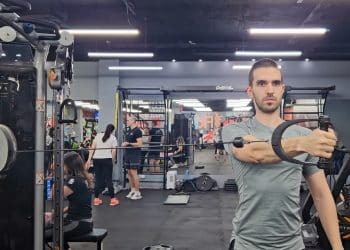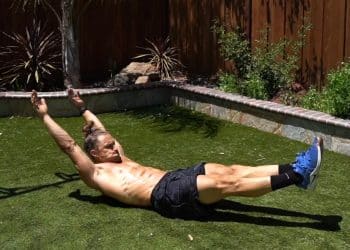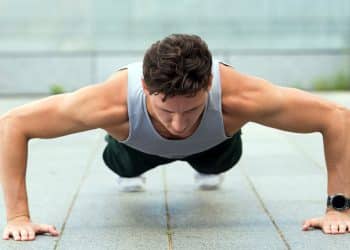Located on the backside of the thigh, the hamstrings play a pivotal role in athletics, complementing other muscle groups like the quadriceps, glutes, and calves. Beyond their athletic importance, hamstrings assist in the gait cycle (walking). Interestingly, their anatomy predisposes them to injuries, particularly among active individuals. Standing single leg curls offer an excellent method to fortify the hamstrings, ensuring they remain healthy, flexible, and functional.
Explore our detailed guide on the standing single leg curl, a bodyweight-only movement.
In This Exercise:
- Target Muscle Group: Hamstrings
- Type: Warmup
- Mechanics: Isolation
- Equipment: Bodyweight
- Difficulty: Beginner
Muscles Worked
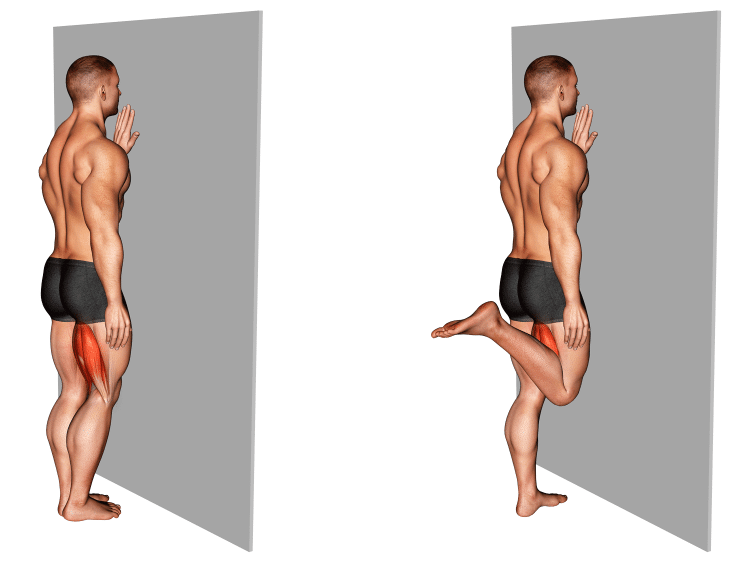
Leg curls are strictly a hamstrings focused exercise. Here we’ve provided a brief description of this muscle’s anatomy and function in the lower body.
Hamstrings: This prominent muscle group on the rear of the thigh comprises three distinct muscles: the semitendinosus, semimembranosus, and biceps femoris. Originating from the hip and attaching to the knee, the hamstrings serve two primary functions: hip extension and knee flexion. It’s noteworthy that the short head of the biceps femoris is unique as it only extends across the knee joint, unlike its counterparts which span both the hip and knee.
How To Do Standing Single Leg Curls
This exercise serves as a straightforward lower body warmup that’s accessible for all. Below, find step-by-step instructions and a video demonstration:
Level Up Your Fitness: Join our 💪 strong community in Fitness Volt Newsletter. Get daily inspiration, expert-backed workouts, nutrition tips, the latest in strength sports, and the support you need to reach your goals. Subscribe for free!
- Seek support from a wall, chair, countertop, or a similar sturdy object to maintain balance.
- Standing with feet hip-width apart, lift one heel towards your buttock. Ensure the upper leg or thigh remains stationary, avoiding any forward movement of the knee.
- Gently lower your foot and repeat for the desired repetitions. Alternate legs if preferred.
Check out the video demonstration for a visual guide.
Tips for Effective Execution
- Mind-Muscle Connection: Focus on feeling the hamstring contract and elongate.
- Breathing: Remember to breathe naturally, exhaling as you curl the leg and inhaling as you release.
Common Mistakes and How to Avoid Them
Arching the Lower Back:
- Mistake: Over-arching the lower back to compensate for weak hamstrings or poor balance.
- Correction: Engage your core throughout the movement. Think about tucking the pelvis slightly and pulling the belly button towards the spine. This will provide better support and protect your lower back.
Using Momentum:
- Mistake: Swinging the leg back quickly, relying on momentum rather than muscle strength.
- Correction: Slow down the movement. Ensure that you’re lifting and lowering the leg using the strength of your hamstrings. Pause for a moment when the heel is closest to the buttock to enhance muscle engagement.
Benefits
Standing single leg curls are a worthwhile exercise when training equipment is limited or as a way to ease yourself into a workout regime. Here are the benefits of including this activity in your weekly health and resistance training routine.
Great warmup
Depending on how intensely you train, standing single leg curls are a nice pre-workout movement that you can do to feel a contraction in the hamstrings and ease yourself into an intense training session before you progress to more challenging resistance.
Work the hamstrings
While you won’t gain much muscle from using just your bodyweight, this is a good exercise for people who are very overweight, obese or rehabbing an injury. At this point, you’re training to keep your muscles healthy and functional.
Promotes physical health and fitness
Starting small is often a gateway to bigger things. For people who may be out of shape and new to physical fitness, exercises like standing single leg curls are less intimidating and more appealing hence more likely to promote physical activity.
Variations
While the bodyweight variation has its place, you need to incorporate weighted leg curls to build serious muscle and strength in the posterior thigh. Here are the best standing single leg curl variations and alternatives for building the portion of your hamstrings that must be target with leg curls.
Level Up Your Fitness: Join our 💪 strong community in Fitness Volt Newsletter. Get daily inspiration, expert-backed workouts, nutrition tips, the latest in strength sports, and the support you need to reach your goals. Subscribe for free!
Machine leg curls
Two of the most popular and effective leg curl exercises are the machine lying and kneeling/standing exercise. What makes them a better choice than other options are the fact that they’re dedicated equipment and hence ergonomic. Not to mention, you can track your progress with a numbered weight stack.
Nordic curls
The Nordic curl, also called Russian curl is done by securing the feet under a solid object (e.g., barbell, couch, specialized equipment, using a strap to a bench, etc) or having someone hold the ankles down and lowering down.
You want to use your arms to, under control, let yourself down close to the floor and then push yourself back up or use your hands to crawl back to the starting position. It’s basically an eccentric-focused exercise
Nordic curls are the most popular form of hamstring eccentric strengthening according to a study and we’d agree that they certainly have their place in a leg training regime (1). Also check reverse Nordic curls.
Resistance band leg curls
If you have something to anchor one end of a resistance band to then you can replicate leg curls cheaply and conveniently in the comfort of your own home (you can also with the following variation too).
Floor slides
This is a creative and handy way to train your hamstrings. You need absolutely no equipment whatsoever and it may be easier to do than many of the other bodyweight variations.
To do it:
- While wearing socks, lie on your back and place your arms down by your sides with your legs extended.
- Lift your butt off the floor and slide your feet as close to your butt as possible while contracting your hamstrings. Keep your body straight and don’t hyperextend your lower back.
- Extend your legs back to the starting position until you’re on your heels and repeat for the desired number of reps.
Incorporating into a Routine
- Lower Body Workout: After warming up with standing single leg curls, transition into bodyweight squats, followed by alternating lunges. Finish with calf raises and a hamstring stretch for a comprehensive lower body routine.
- Rehabilitation Exercise: Consult with a physical therapist for specific guidance. Typically, starting with 2 sets of 10, focusing on form over reps, is advised.
- Active Recovery Days: Begin with standing single leg curls. Follow with a series of dynamic stretches, such as leg swings and hip circles. Conclude with foam rolling, paying attention to the hamstrings and calves.
FAQs
How often should I do standing single leg curls?
For strength building, include them in your lower body workouts 2-3 times a week. For rehabilitation or active recovery, consult with a healthcare professional.
Can I do this exercise if I have a knee injury?
It depends on the nature and severity of the injury. Always seek advice from a medical professional before introducing new exercises post-injury.
How do I increase the difficulty without weights?
Increase the number of repetitions, add isometric holds at the peak contraction, or incorporate resistance bands.
Bottom Line
Standing single leg curls are more than just a basic exercise; they’re a foundational movement that leverages the natural weight of your legs to stimulate and strengthen the hamstrings. Whether you’re rehabilitating, warming up, or just starting your fitness journey, this exercise offers an effective way to enhance hamstring health and functionality.
Interested in measuring your progress? Check out our strength standards for Bodyweight Squat, Hip Extension, Squat, and more.


